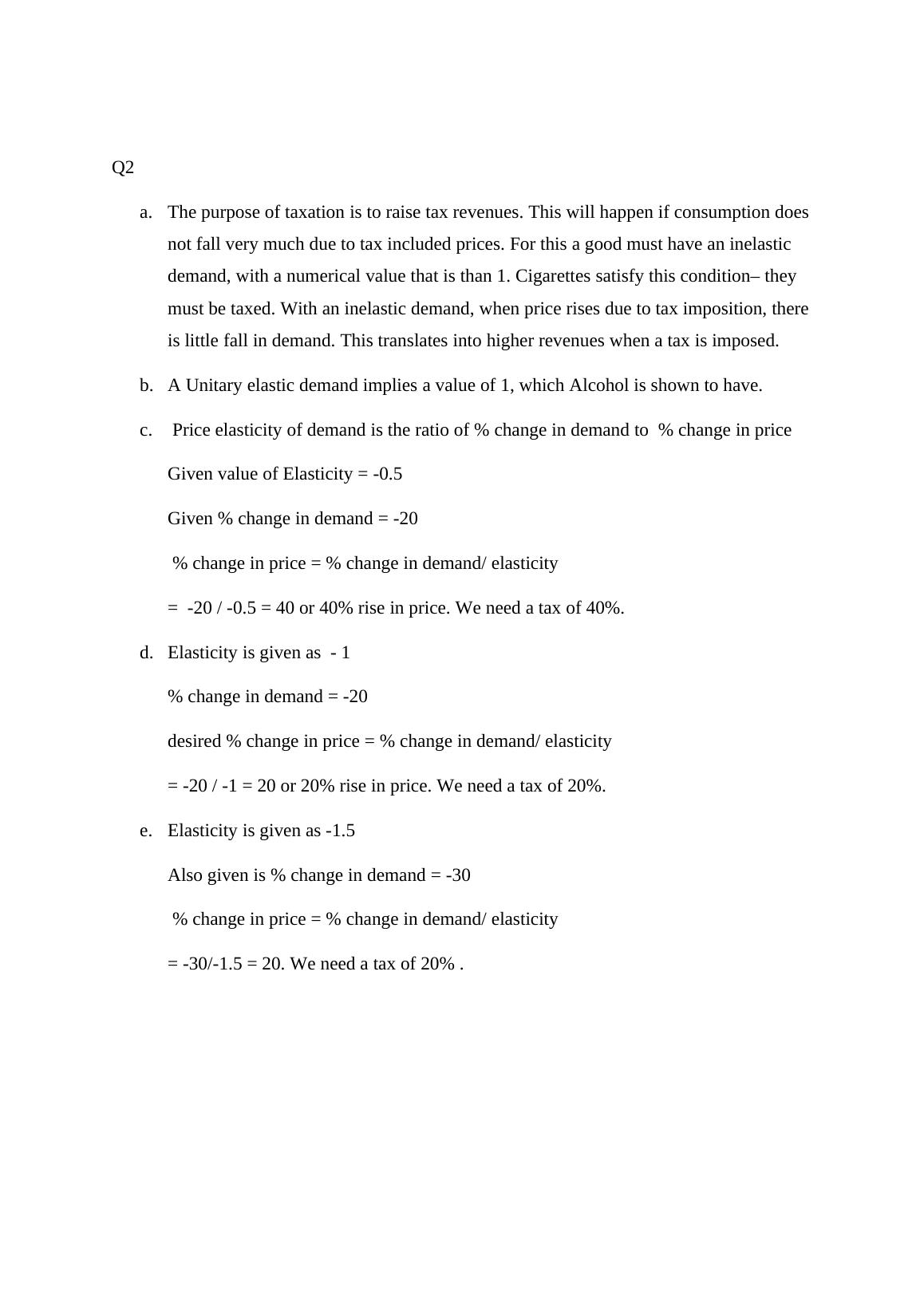Price Discrimination- Doc
Added on 2020-03-16
8 Pages2637 Words80 Views
A1. a.Price discrimination is a situation where the seller is able to charge a different price from different buyers, with no difference in product sold. It is possible in monopoly only. in this case, 6 tickets are charged $16 for adult buyers, while concession buyers pay only $2 for the same.b.Producer surplus will be higher and consumer surplus is lower when there is price discrimination as compared to absence of discrimination.c.The rule is to set MR=MC =4 in each market separately. As shown in red, for adult buyers 10 tickets for $12, and the other market 3 tickets for $8 will be sold in eqb. PQTRMR1211210220883244642404520-2d.Consumer surplus = consumer’s willingness to pay - what is actually paid. In adult buyer market the surplus = (20-12)*2 +(18-12)*2+(16-12)*2 +(14-12)*2 = 40. From other market surplus = (12-8)*1+ (10-8)*1 = 6. So total = 46. e.Now we get market demand, andthen use MC= MR rule so that 11tickets are sold for $12. He sellstill the point MR>MC. With P=10 MC is higher than MR.Consumer surplus is now (20-12)*2 +(18-12)*2+(16-12)*2+(14-12)*3 = 42 PQTRMR202401847232/2=161669624/2=1214811216/2=812101208/2=410121200/2 = 0814112-8/2 = -461696-16/2 = -841872-24/2= -1222040-32/2= -16PQtotal QTRMR2022401844721616669612148811281210+11113220/3=6.331012+2141408/3=2.33814+317136-2616+420120-8418+52392-14220+62652-20

Q2a.The purpose of taxation is to raise tax revenues. This will happen if consumption doesnot fall very much due to tax included prices. For this a good must have an inelastic demand, with a numerical value that is than 1. Cigarettes satisfy this condition– they must be taxed. With an inelastic demand, when price rises due to tax imposition, thereis little fall in demand. This translates into higher revenues when a tax is imposed. b.A Unitary elastic demand implies a value of 1, which Alcohol is shown to have. c.Price elasticity of demand is the ratio of % change in demand to % change in priceGiven value of Elasticity = -0.5Given % change in demand = -20% change in price = % change in demand/ elasticity = -20 / -0.5 = 40 or 40% rise in price. We need a tax of 40%. d.Elasticity is given as - 1% change in demand = -20desired % change in price = % change in demand/ elasticity = -20 / -1 = 20 or 20% rise in price. We need a tax of 20%. e.Elasticity is given as -1.5Also given is % change in demand = -30% change in price = % change in demand/ elasticity = -30/-1.5 = 20. We need a tax of 20% .

Q3.a.The decision to go for additional unit, requires a comparison of MR with MC. the MC will use explicit costs, ignoring any sunk costs. Marginal cost is the additionalcost of producing each unit, and is $5000The marginal revenue refers to the additional revenues collected from an additional unit. MR= 6500Since MR exceeds MC, it implies that an additional unit fetches more revenues than the costs incurred to produce it. Accordingly the firm must produce the additional unit.b.Carl’s manager is doing the following calculations:revenues =4*6500 = 26000costs = 4*5000 +30000 = 50000, which implies he is adding the $ 30000 spent ondevelopment as costs. Accordingly, he makes losses = 26000 -50000 = 14000This is wrong way of calculating costs. the 30000 spent on development of the unit are not fixed costs. they are SUNK costs, defined as costs that are not capableof being recovered. Sunk costs and fixed costs can be confusing, but sunk costs are not to be included in profit considerations. TSunk costs are not dependent on output just like fixed costs. However a crucial difference is that without sunk costs no production is possible. Fixed costs come after sunk costs have been incurred, and variable costs start when production starts. Without the development of the unit, there would be no production. The firm has come up only because the unit was developed. If 30000 is removed from cost calculations then profits of 6000( = 26000-2000) can be made by the firm. (con.yale.edu, n.d.) (Pitt.edu, n.d.).

End of preview
Want to access all the pages? Upload your documents or become a member.
Related Documents
BSA 2019 - Price Discriminationlg...
|9
|2325
|44
Microeconomics Elasticity Of Demand Assignmentlg...
|14
|2894
|87
Quantity Demanded Question and Answer 2022lg...
|7
|1449
|10
Economics Study Material and Solved Assignmentslg...
|15
|1823
|34
Microeconomics Principles: Demand Curve, Equilibrium, Taxation and Game Theorylg...
|19
|1789
|250
Microeconomics Study Material with Solved Assignments and Essays - Deskliblg...
|9
|712
|412